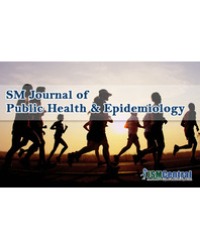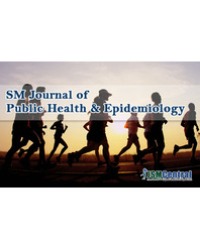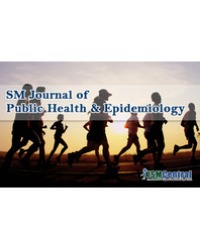
Path of Darkness to the Ways of Bright Lights
I read the bitter news of article published recently. Intentionally some PLHA people transmitted HIV/AIDS
Ashok Pandey*


I read the bitter news of article published recently. Intentionally some PLHA people transmitted HIV/AIDS
Ashok Pandey*

Metabolic acidosis is common in severe malnourished pediatric patients.
Objective: The objective of this study was to treat severe malnourished children according to results of renal metabolic study.
Method: The study was prospective, clinical trial (therapeutic). Overload test with sodium bicarbonate at 5% was performed to 30 severe malnutrition: marasmus, kwashiorkor or mixed, from 6 months to 5 years, primary etiology, hemodynamically stable, metabolic acidosis, hyperchloremia and anion gap urinary positive, which in turn they divided into two groups: 15 were treated according to the results of renal metabolic study (study group) and 15 receiving usual care (control group). The calcium / creatinine and uric / creatinine ratio was determined. Test of statistical significance were used: Student t Test, chi square Test or Fisher exact probability. Z Test the percentage difference. Cramer’s V Test. Statistical significance (p<0.05).
Results and Discussion: In 12 (40.0%) patients distal renal tubular acidosis was observed. There was a significant difference (p<0.013) between the dry weight and weight at discharge in both the study and control group. There was a significant difference (p<0.05) between the mean value of serum albumin entry and exit in the study group and not in the control group. It is important to treat metabolic acidosis in severe malnutrition to clinical improvement (weight) and biochemical outcomes (serum albumin), breaking the vicious circle in which these patients are frequently involved.
Szarvas Barbella Sobeida¹*, Dominguez Luis², Kolster Castro Cruz¹ and Callegari Carlos³

The intestinal microbiota in health is characterized by stability and diversity; any changes under different metabolic or inflammatory diseases cause an imbalance, changes in the composition and consequently modification in the intestinal homeostasis. The intestinal microbiota is influenced by the microorganisms that enter with the diet. Malnutrition processes, both obesity and malnourishment, induces changes in the intestinal microbiota composition, affecting mainly lactobacillus, bifidobacteria and bacteroides populations. These changes are accompanied by alterations in the intestinal villi architecture and in the intestinal barrier function. The intestinal ecosystem is a complex microenvironment where, multiple cells type (prokaryote and eukaryote) interacting constantly. The microbiota modifications induced by changes in the eating habits have repercussion on intestinal immunity. Probiotic microorganisms contained in different foods constitute an alternative to induce a positive balance in the microbiota. On the other hand several studies demonstrate their ability to stimulate the immune system at the intestinal level. We summarize here the results published specifically on the relationship between microbiota, obesity and intestinal immune system.
Carolina MG¹,², Ivanna NN³ and Gabriela P¹,²*

Background: Immense literature reports that condoms’ demand, distribution, and actual utilization are often constrained by social-cultural, psychological and supply factors. This article reports a qualitative study of the experiences, perceptions and attitudes of religious leaders and parents in relation to condom promotion in Tanzania.
Methodology: In-Depth Interviews (IDIs) with religions leaders and Focus Group Discussions (FGDs) with parents were conducted in Mpwapwa and Mbeya Rural districts between November 2011 and June 2012. FGD and IDI were tape recorded for later transcription verbatim. Transcribed reports supplemented with handwritten f ield notes were analyzed both manually and with help of NVIVO software.
Results: Mixed opinions were obtained from IDIs and FGDs on about the issue of condom promotion through mass media and school health programs. A few religious leaders and majority of non-Catholic parents partly supported the existing condom promotion strategies, contrary to Catholic and Islamic faith leaders who strongly opposed. All IDI and FGD participants seemed to appreciate that young children were already aware of what sex is and therefore like adults children have the right to information concerning HIV prevention including the issue of condom use. However, the majority were not in favor of health education targeting young children on condom use campaigns on ground that doing so exposes and tempts young and virgin children to premature sexual behaviors. Meanwhile, encouraging adult people to use condoms also was perceived as promoting promiscuity behaviors.
Conclusion: Condom advocates should maintain dialogue with religious leaders and faith adherents if they expect to overcome the challenge of dogmas prohibiting condom usage during sex by arriving at a mutual understanding of the benefits of condom use.
Godfrey M Mubyazi¹*, Amon Exavery², Hamisi M Malebo¹, Emmanuel A Makundi¹, Sia E Malekia¹, Victor Wiketye³, Adiel K Mushi¹, Judith Msovela¹, Mwanaidi Y Kafuye¹, John W Ogondiek³, Edward Maswanya¹, Filemoni Tenu¹, Joyce K Ikingura¹, Abubakar Mziray¹, Acleus SM Ruta⁴, Allen Garimo¹, Mwelecele N Malecela¹ and Julius J Massaga¹

Background: Cholera outbreaks in Tanzania’s commercial capital, Dar es Salaam, have been occurring almost each year since 1974 with a Case Fatality Rate (CFR) averaging to 10.5%. This study analyzed major source waters for the city to ascertain safety for human consumption. The objective of the study was to determine the extent to which borehole and tap water meet the recommended drinking water quality standards by domestic and international organizations.
Methods: Total viable and coliform counts were evaluated using the standard plate count method. The physicochemical parameters were analyzed using standard methods.
Results and discussion: With respect to WHO standards, all water samples passed the pH and TDS parameters. With exception of tap water, all borehole water samples failed on turbidity standard maximum of 5 NTU for drinking water. Seven out of eleven (63.6%) borehole water samples and tap water sample failed on microbiological purity of drinking water standards and considered unfit for human consumption as revealed with the presence of unacceptable levels of fecal coliforms.
Conclusion: The implication of these findings is that, large number of Dar es Salaam city dwellers sourcing drinking water from boreholes and tap water are continuously ingesting fecally contaminated water that predispose them to infectious microbial risks of pathogenic gastrointestinal bacteria and viruses. Household based water treatment and safe storage (HWTS) is highly recommended to safeguard health of consumers of water from these sources. Regular assessment of all parameters mentioned in this study is advocated.
Caroline SM Kihupi¹,²*, Lawi Yohana¹, Josephat A Saria¹ and Hamisi M Malebo²*